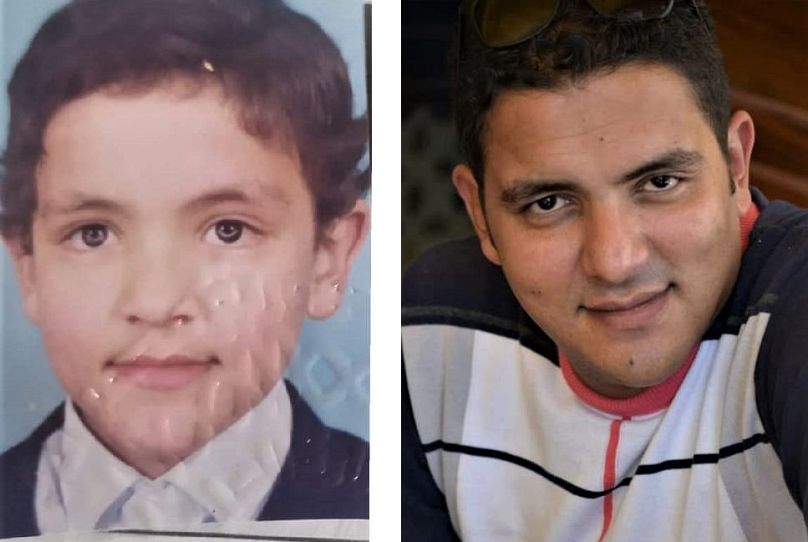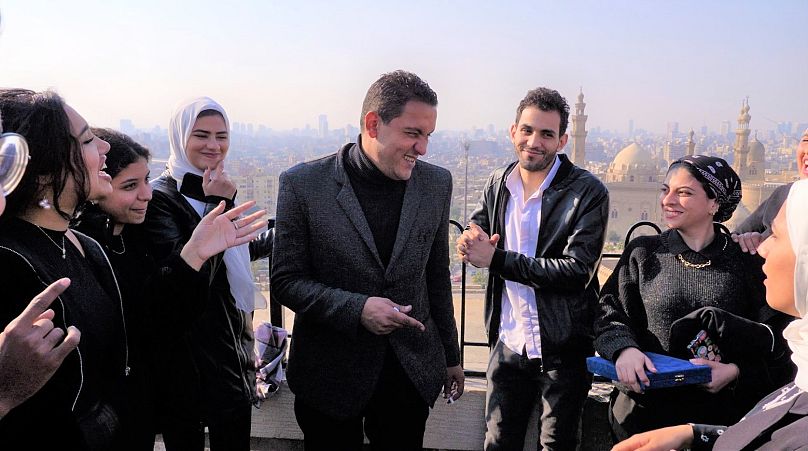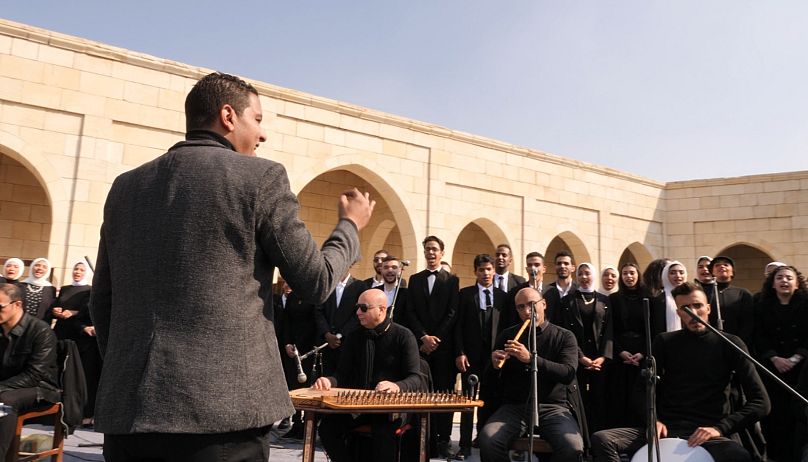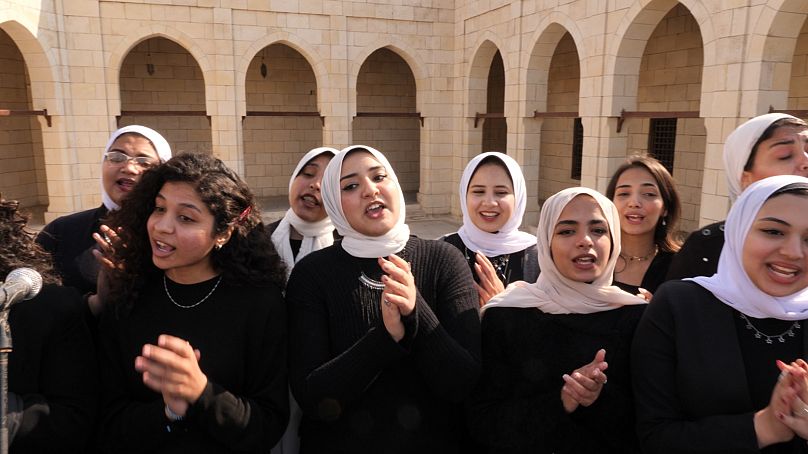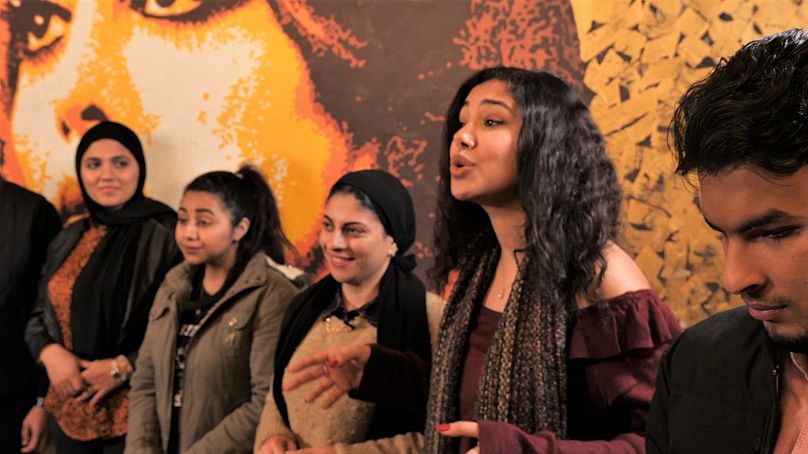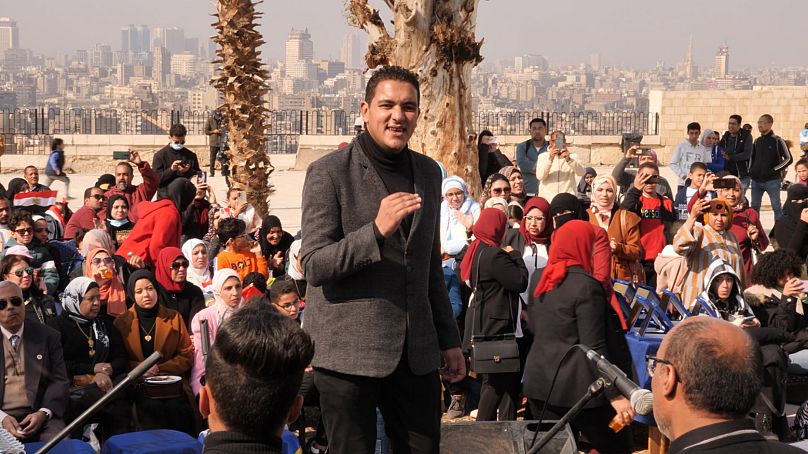In partnership with Media City
SCENES shines a spotlight on youth around the world who are breaking down barriers and creating change. The character-driven short films will inspire and amaze, as these young change-makers tell their remarkable stories.
As a young boy, Mahmoud Waheed would listen to songs by famous Egyptian singers like Umm Kulthum and Mohamed Fawzy on train rides from Cairo station to Sohag, Upper Egypt, his place of birth. Mahmoud didn't know then that these ordinary trips would lay the foundation for his future career as one of Egypt's most promising choir conductors.
"The radio was an entertainment tool, and everyone in the family listened to their favourite radio station, and I used to listen to Umm Kulthum station from 5 to 11 pm," Mahmoud remembers. "My musical background was made up of songs I heard on the radio or on cassettes while riding the train to my hometown," he explains.
The Shubra upbringing
Mahmoud was raised in the Shubra neighbourhoods, a dense district in the middle of Cairo where Muslims and Christians live together as one big family and are known for it. It is also known for its bustling, lively streets, vibrant shops, and an array of scattered mosques and churches.
"I memorised the Holy Quran and listened to elders' Islamic melodies when I was little," Mahmoud recalls. "I listened to folk tunes in Shubra, and Coptic religious songs also existed in the neighbourhood," he says.
How the choir got started
Mahmoud describes himself as a singer, music enthusiast, composer, and maestro. He tells SCENES that as a university choir conductor, he noticed many young singers stopped singing unwillingly after graduation.
"College action has momentum. After college, they can't practise their activities; hence, the pleasant space they lived in ends," he says. Mahmoud created a structure that unites present and former students. "That framework was done about two years ago," he confirms.
Mahmoud directs a choir called "Arabic Harmony". Initially, the group struggled to find a space to practise. Wedding halls and conference rooms were the only places suitable for 70 or 80 singers to congregate. "Ain Shams University gave us access to their premises. After a few practice sessions, the university's president and the vice president gave us a theatre once or twice a week to sing. They helped a lot. The biggest difficulty was resolved," says Mahmoud.
A Cappella effect
One of the choir's key musical attributes is a captivating style known as a cappella. A cappella is a singing style that uses no instruments. It was sung in churches and other places of worship in Europe in the late Middle Ages when not all of these places had musical instruments.
"Collective singing is more influential to the recipient and for the singer. The effect is stronger and more beautiful, and it makes people feel they are not alone, and this is an important value," Mahmoud says. "With our Oriental music, we want our singing framework to incorporate Western music, which is brilliant in its distributions and melodic lines," he explains.
Western music uses polyphony, while Arab music uses monophony. Polyphony has two or more melodic lines playing simultaneously, while monophony has one.
A large melting pot
There are currently 190 people in the choir, and as many as 130 can show up at once for practice sessions. The maestro has assembled talented singers and musicians and moulded them into one cohesive ensemble.
A reluctant Clara Edmon at first resisted. However, she has since become a featured soloist in the choir. "At first, I sang with the choir at my college. At the time, I was singing Western music, but 'Arabic Harmony' sang Oriental, which made me a little nervous," says Clara. "I really like what we do, and I really like the maestro," she adds.
Listening on repeat
Mahmoud Sami is the composer and producer for the choir. He and the maestro share more than just a first name. "We want people who hear us to remember us and to come back to listen to our songs and play them again," Mahmoud Sami says, echoing the maestro's vision.
"Arabic Harmony" hopes and dreams keep expanding as the choir garners more attention. It's progressing swiftly towards its long-term objective of winning widespread acclaim. Choir members have expressed their desire to perform at concerts worldwide and to participate in international festivals. It's an aspiration instilled in everyone by the maestro.













